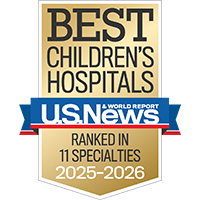Fetal surgery firsts
The first open fetal surgery in the world was performed at UCSF in the early 1980s.


Chronic lung disease (CLD), also known as bronchopulmonary dysplasia, occurs when a newborn's lungs have been injured. Damaged tissue inside the baby's lungs becomes inflamed and may break down, causing scarring. This scarring can make it difficult for a newborn to breathe, in which case the baby will need oxygen therapy.
In the past, the condition was thought to only affect premature babies with a breathing problem called respiratory distress syndrome, who were treated with oxygen through a ventilator. However, with the development of new therapies and improved ventilation techniques, CLD rarely affects larger premature babies. It's now seen primarily in very premature newborns, both those who have been treated for respiratory distress syndrome and those who have not.
Most babies with CLD survive, and many outgrow their lung problems. While they have CLD, it's important for them to receive good nutrition to prevent problems with growth and development and complications of the condition.
Factors that may increase a newborn's chances of developing CLD include:
Babies with chronic lung disease will have trouble breathing normally. Signs of this may include:
Chronic lung disease (CLD) is usually diagnosed with a chest X-ray that shows scar tissues in the lungs, a characteristic of the condition.
Treatment for chronic lung disease depends on the severity of the condition. Therapy involves vaccinations to ward off infections, and oxygen to help babies breathe normally until their lungs improve. Some babies may need a medicine, called a diuretic, which makes them pass more urine to remove extra fluid from around their lungs.
Some babies may not need oxygen therapy by the time they go home, but others will need continued treatment after they've left the hospital. Before going home, your doctors and nurses will teach you how to give your baby oxygen therapy and other medications, such as inhaled treatments.
UCSF Benioff Children's Hospitals medical specialists have reviewed this information. It is for educational purposes only and is not intended to replace the advice of your child's doctor or other health care provider. We encourage you to discuss any questions or concerns you may have with your child's provider.

Ranked among the nation's best in 11 specialties
Fetal surgery firsts
